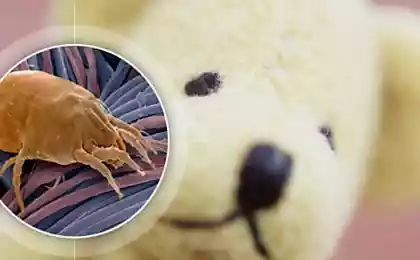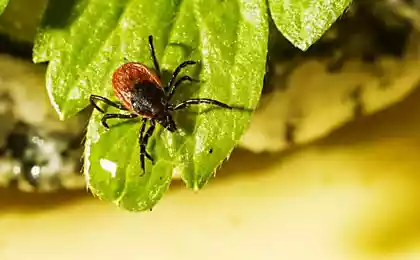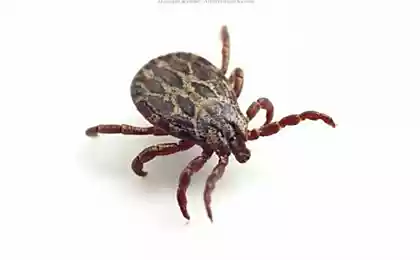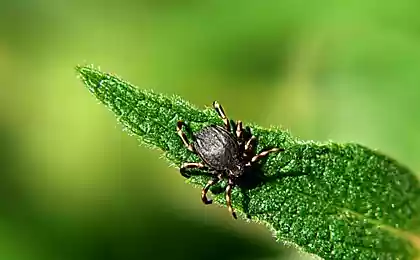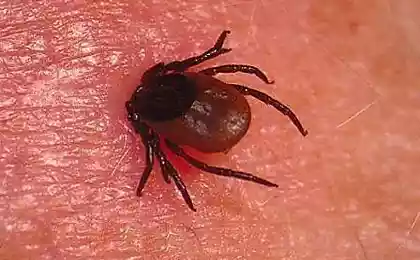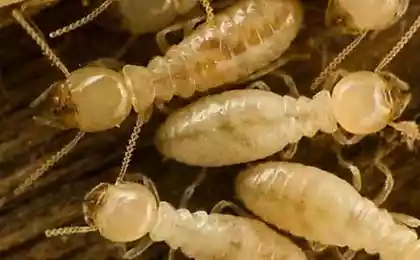239
Flying mites are spreading, they began to be noticed more often, be vigilant and careful.
A friend recently called and said, “Ticks fly!” Be careful. What ticks, where do they fly? After all, I sit at home mainly, and in nature I try once again to keep my leg naked from under my pants. I was really excited by the warning. And for good reason, because the other day an ammophile flew into my apartment. This is a sand wasp that is not found in my region at all. To say that I was tense is to say nothing!

We will now understand what these flying mites are and whether they should be feared. So much for climate change!
In the summer season, the question of ticks is especially acute. After all, the hotter it is on the street, the more actively these insects are looking for what to profit from. If you go to nature, first of all you need to worry about your safety and take all necessary measures so that the tick bite is not afraid of you.

Instagram / @al.shipilevsky But what about flying ticks? Everyone's been talking about them lately. In fact, ticks that fly do not exist. They are often confused with other insects. A blood-sucking deer. Visually, it really resembles a tick, but with wings. People call it a flying tick.
However, do not confuse these insects. The deer bloodsucker does not exceed the size of 0.5 centimeters. It has a flat brown-black body and 2 long transparent wings. Also, this parasite has 6 thick legs that resemble flies. But ordinary mites are arachnids, and they have 8 legs.

Instagram / @iiilya_l A common tick sits in bushes or grass looking for its prey. The blood-sucking deer is in the air with its brethren. As a rule, insects fly in flocks, so it is easy to see them from afar. In very hot weather, they are on the edges of the forest. Before sitting on the victim, the parasite flies around it several times. This gives you a little time to react.
From the bite of a deer bloodsucker, nothing good can be expected. An insect can transmit an infection and other diseases to a person or animal. Often at the site of the bite there is swelling and rashes. Allergists should be especially careful about this. The parasite prefers to bite a person by the neck, and then with the help of its legs, on which there are convenient hooks for fixing on the victim, moves on the head through the hair.

As soon as the insect sits on the body, it sheds its wings and attaches itself to the skin. Then there is a search for relatives that are needed for reproduction. The female lays eggs directly on the prey, and then they fall into the ground, where they continue to mature.

If you or your pet is bitten by a bloodsucker deer, you should immediately consult a specialist. While on the road, it makes sense to cool the bite site. Remove the insect from the body can be tweezers, sticky tape or a special scallop for lice. A pet can be bathed - a bloodsucker deer does not like water.

But there's good news. The number of these insects depends on the number of deer and moose in your region. Although the parasite attacks other forest dwellers, and sometimes even birds. As for people, bloodsuckers react sharply to movement and are more likely to choose adults than children as their victims. They care about the size of the victim.
One way or another, being in the woods, be very careful and keep your ear open. The effect of bloodsucking on the human body is not fully understood. I don’t want to meet this parasite again.

We will now understand what these flying mites are and whether they should be feared. So much for climate change!
In the summer season, the question of ticks is especially acute. After all, the hotter it is on the street, the more actively these insects are looking for what to profit from. If you go to nature, first of all you need to worry about your safety and take all necessary measures so that the tick bite is not afraid of you.

Instagram / @al.shipilevsky But what about flying ticks? Everyone's been talking about them lately. In fact, ticks that fly do not exist. They are often confused with other insects. A blood-sucking deer. Visually, it really resembles a tick, but with wings. People call it a flying tick.
However, do not confuse these insects. The deer bloodsucker does not exceed the size of 0.5 centimeters. It has a flat brown-black body and 2 long transparent wings. Also, this parasite has 6 thick legs that resemble flies. But ordinary mites are arachnids, and they have 8 legs.

Instagram / @iiilya_l A common tick sits in bushes or grass looking for its prey. The blood-sucking deer is in the air with its brethren. As a rule, insects fly in flocks, so it is easy to see them from afar. In very hot weather, they are on the edges of the forest. Before sitting on the victim, the parasite flies around it several times. This gives you a little time to react.
From the bite of a deer bloodsucker, nothing good can be expected. An insect can transmit an infection and other diseases to a person or animal. Often at the site of the bite there is swelling and rashes. Allergists should be especially careful about this. The parasite prefers to bite a person by the neck, and then with the help of its legs, on which there are convenient hooks for fixing on the victim, moves on the head through the hair.

As soon as the insect sits on the body, it sheds its wings and attaches itself to the skin. Then there is a search for relatives that are needed for reproduction. The female lays eggs directly on the prey, and then they fall into the ground, where they continue to mature.

If you or your pet is bitten by a bloodsucker deer, you should immediately consult a specialist. While on the road, it makes sense to cool the bite site. Remove the insect from the body can be tweezers, sticky tape or a special scallop for lice. A pet can be bathed - a bloodsucker deer does not like water.

But there's good news. The number of these insects depends on the number of deer and moose in your region. Although the parasite attacks other forest dwellers, and sometimes even birds. As for people, bloodsuckers react sharply to movement and are more likely to choose adults than children as their victims. They care about the size of the victim.
One way or another, being in the woods, be very careful and keep your ear open. The effect of bloodsucking on the human body is not fully understood. I don’t want to meet this parasite again.
Rescuers are actively looking for a missing submersible with billionaires, but there has almost run out of oxygen
I worked for years to build a big family home, but my dreams turned against me.







